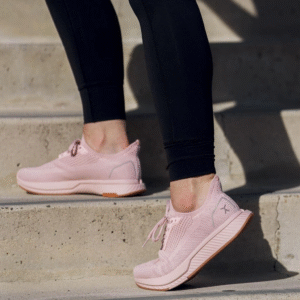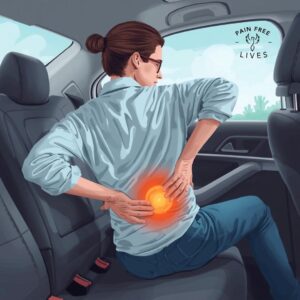We’ve all been told to “sit still” at some point in school, at work, or even at the dinner table. Fidgeting, shifting in your chair, or tapping your foot is often seen as a sign of restlessness or lack of focus. But what if those small, almost unconscious movements were doing more good than harm? Emerging research suggests that micro-movements, tiny adjustments your body makes throughout the day, play an important role in protecting joint health and preventing pain.
Why Stillness Can Be Harmful to Joints
The human body was built for movement. Joints, in particular, thrive on motion because movement helps lubricate them and keeps cartilage nourished. When we remain completely still for too long, such as sitting at a desk for hours, joints are deprived of the fluid circulation they need. This leads to stiffness, pressure buildup, and, over time, wear and tear that contribute to pain and degenerative conditions like arthritis.
Think of your joints as hinges on a door. If a hinge never moves, it becomes rusty and squeaky. Micro-movements act like the occasional push or swing that keeps the hinge smooth and functional.
What Are Micro-Movements?
Micro-movements are the small, often unnoticed shifts your body makes during periods of stillness. They include things like:
- Adjusting your posture in a chair.
- Crossing and uncrossing your legs.
- Stretching your fingers or rolling your shoulders.
- Rocking gently on your feet while standing.
- Even tapping your toes under a desk.
Though they may seem insignificant, these subtle motions keep muscles active, stimulate blood flow, and reduce the stress that builds up in static positions. Essentially, they are your body’s way of self-correcting and protecting itself from the dangers of prolonged stillness.
How Fidgeting Benefits Joint Health
Far from being a distraction, fidgeting may serve as your body’s natural defense mechanism. Here’s how micro-movements support joint health:
Lubrication of Joints
Every joint is surrounded by synovial fluid, which acts like oil in an engine, reducing friction and wear. Micro-movements stimulate the flow of this fluid, ensuring that cartilage remains cushioned and joints move smoothly.
Reduced Pressure and Load
When you sit or stand in one position, certain joints bear more weight than others. Tiny shifts redistribute this pressure, giving overworked tissues a break and preventing damage from repetitive strain.
Activation of Stabilizing Muscles
Micro-movements engage the small stabilizing muscles around joints, which often go unused during complete stillness. This subtle activation strengthens the muscles that support joints, reducing the risk of injury.
Improved Circulation
Fidgeting boosts circulation, which delivers oxygen and nutrients to joint tissues while carrying away waste products. Better circulation means healthier, more resilient joints.
The Bigger Picture: Micro-Movements and Whole-Body Health
The benefits of micro-movements extend beyond the joints. Studies suggest that frequent small movements throughout the day can counteract some of the risks associated with sedentary lifestyles, including poor circulation, increased blood sugar, and reduced calorie burn. This doesn’t mean fidgeting replaces exercise, but it does provide an added layer of protection, especially for people with desk jobs or long commutes.
In fact, one study found that individuals who naturally fidget burned more calories each day than those who stayed completely still even when both groups spent the same amount of time sitting. These “hidden workouts” may not build muscle, but they prevent stagnation and help keep the body in balance.
From Fidgeting to Intentional Micro-Movements
While natural fidgeting is beneficial, you can also practice intentional micro-movements to support joint health. Consider these simple habits:
- Shift frequently: Set a timer to remind yourself to adjust your posture or stand up every 30 minutes.
- Stretch gently: Rotate wrists, shrug shoulders, or roll ankles during breaks.
- Use your workspace creatively: Try a balance cushion or standing desk to encourage natural shifting.
- Engage your feet: Tap your toes or flex your ankles under your desk to keep circulation flowing.
- Practice micro-breaks: Take 1–2 minutes to walk or stretch every hour, even if you can’t leave your workspace.
These intentional actions combine the natural benefits of fidgeting with a structured approach to joint protection.
When to Be Cautious
While fidgeting and micro-movements are generally helpful, they aren’t a cure-all. If you experience persistent pain, swelling, or stiffness, it may be a sign of underlying joint issues that need professional evaluation. In some cases, excessive or repetitive movements could aggravate existing injuries. That’s why it’s important to balance micro-movements with proper ergonomics, exercise, and medical guidance when needed.
Small Movements, Big Impact
The next time someone tells you to “sit still,” remember that your body knows better. Micro-movements may seem insignificant, but they’re part of an essential system that protects your joints, reduces stiffness, and keeps your body healthier in the long run. Far from being a bad habit, fidgeting can be a subtle yet powerful ally in maintaining mobility and preventing pain.
At Pain Free Lives, we encourage patients to see movement in all its forms as medicine. Whether it’s intentional exercise, posture adjustments, or unconscious fidgeting, every bit of motion contributes to healthier joints and a pain-free future.
Encouraging small movements throughout the day is easier with the right setup. Balance cushions, under-desk pedal exercisers, and footrestsamazon.com/shop/painfreelives promote natural fidgeting and joint-friendly motion, even in sedentary environments. These subtle tools can transform long hours of sitting into opportunities for healthier joints.







